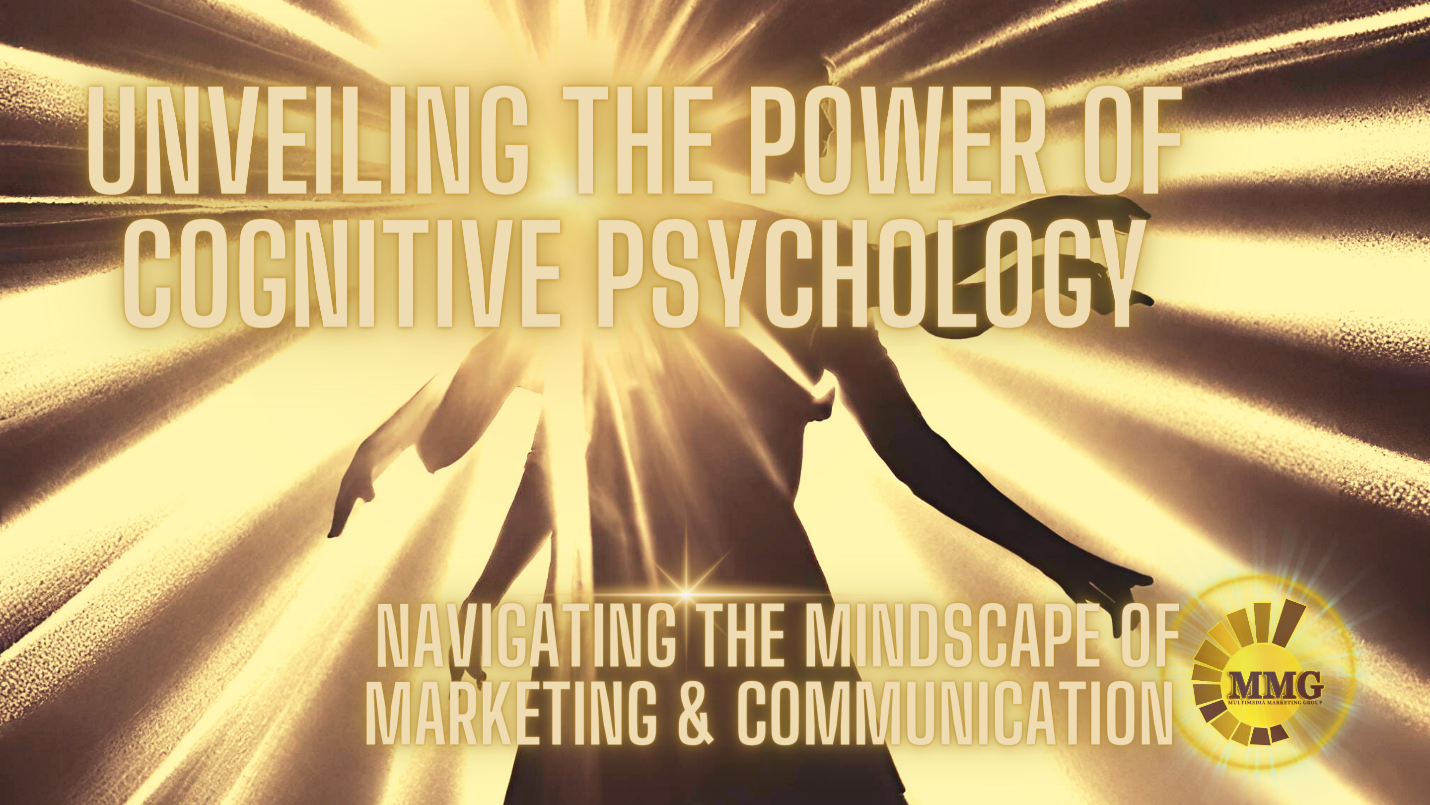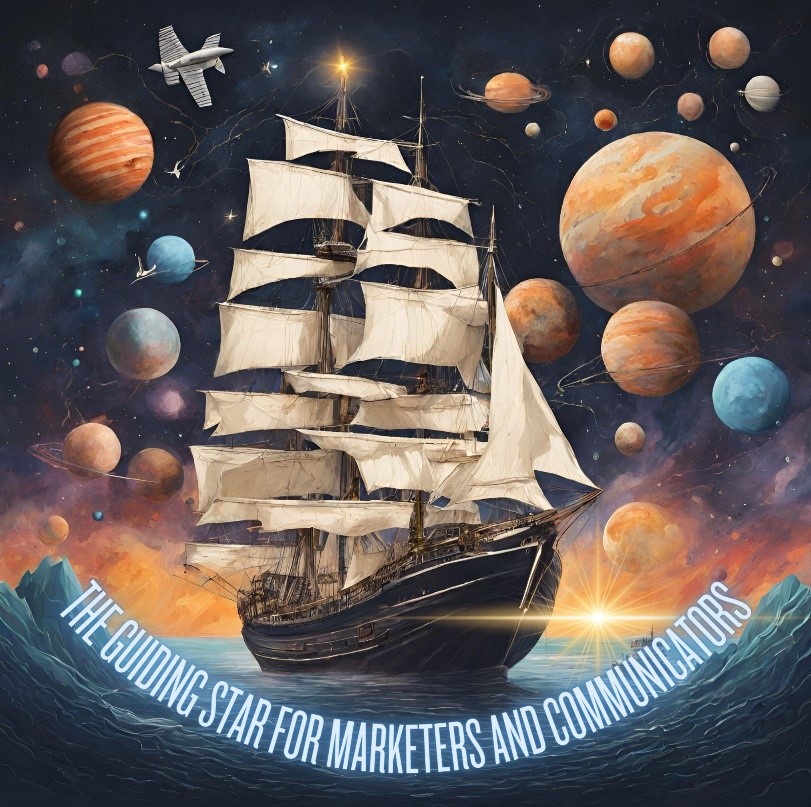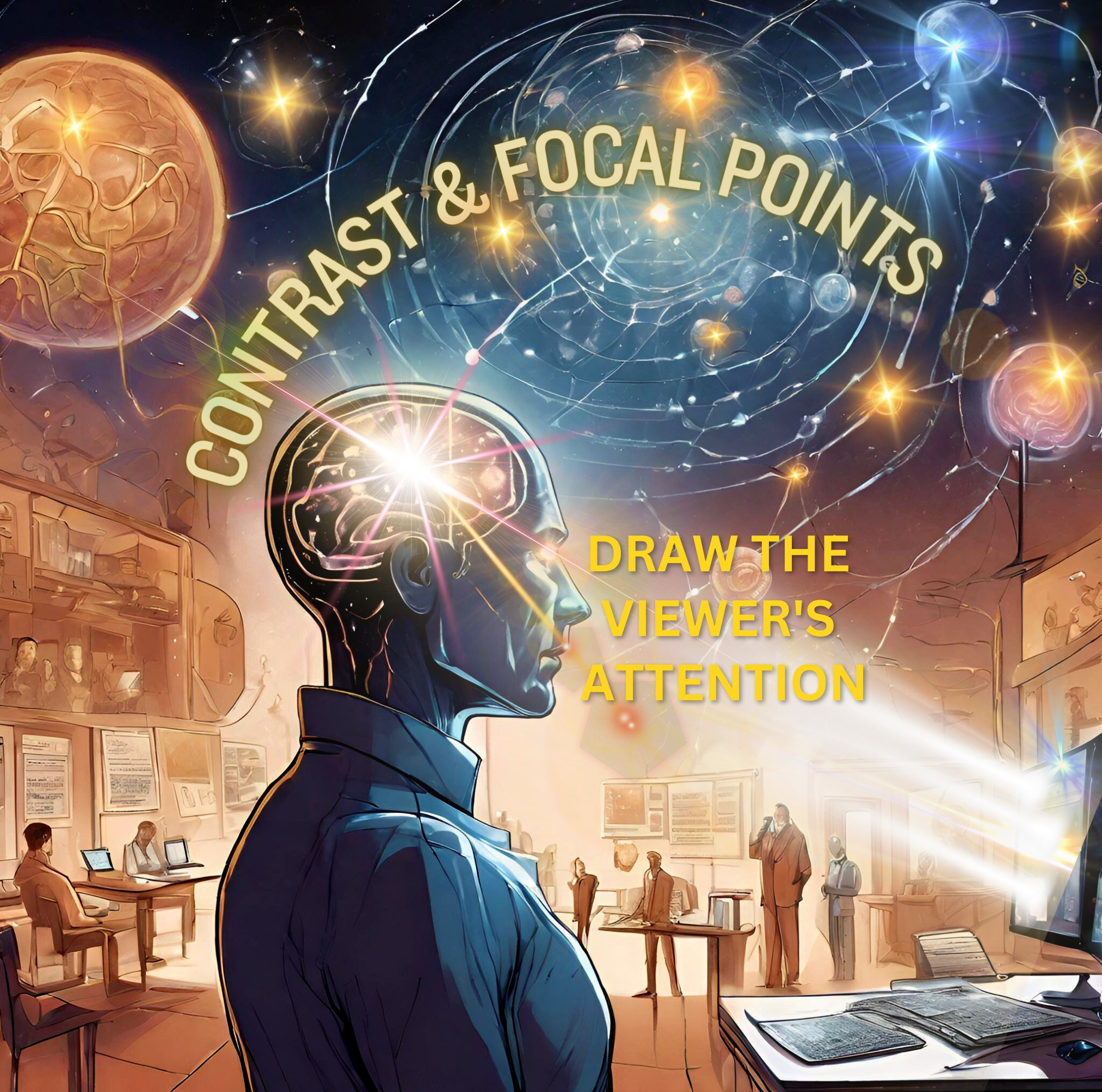
Navigating the Cosmos of Consumer Minds Cognitive Psychology as the Guiding Star for Marketers and Communicators
To the Reader:
In this white paper series, we unveil the secrets held at the intersection of three pillars of professional expertise, revealing a roadmap for those who aspire to excel in the ever-evolving field of marketing and communication. Welcome to a world where expertise is the ultimate currency, and Multimedia Marketing Group is your trusted guide on this transformative journey. The series embarks on an expedition through the realms of cognitive psychology, the 10,000-hour concept, and the unique role of Marketing Diagnostic Experts. These three pillars intersect to unveil the intricate interplay between science and intuition in advertising, marketing, and communication. This document is divided into three distinct chapters, each shedding light on a fundamental aspect of this journey.
Chapter One
In the vast universe of commerce and communication, where ideas and products traverse the infinite expanse of human consciousness, understanding the human mind is akin to having a guiding star. Just as ancient mariners once relied on celestial bodies to chart their course through the open seas, today’s marketers and communicators navigate the boundless realm of consumer behavior with a compass forged by cognitive psychology.

In our modern business world and society as a whole, there is a symphony of ceaseless stimuli and choices. A cacophony of brands, messages, and products competes for the limited currency of attention. In this maelstrom, understanding how people think, perceive, remember, and make decisions has become the North Star for those seeking to stand out, connect, and inspire.
Cognitive psychology serves as the beacon that cuts through the darkness of this vast cosmos. It illuminates the intricate constellations of the human mind, revealing patterns, preferences, and behaviors that were once shrouded in mystery. In doing so, it transforms marketing and communication from art into science, and from guesswork into precision.
Just as ancient explorers ventured into the unknown guided by the stars, marketers and communicators now explore the minds of consumers, guided by the principles and insights offered by cognitive psychology. This journey is a continuum, an ongoing expedition into the depths of human cognition, and an unwavering quest for a deeper connection with those we seek to reach.
In this white paper narrative, we embark on an odyssey through the interstellar realms of cognitive psychology’s applications in marketing and communication. It is a story of discovery, transformation, and innovation. It is an exploration of the profound role that understanding the human mind plays in crafting messages, designing products, and creating experiences that resonate deeply with individuals.
We venture into the ever-evolving landscape of consumer behavior, where the stars of perception, attention, memory, and decision-making shine brightly, guiding us toward impactful and ethical marketing practices. As we traverse the boundless cosmos of choices and stimuli, we find that cognitive psychology acts as a guiding star, not just for our campaigns but also for our ethical compass, steering us toward transparency, empathy, and consumer-centricity.

As we set sail on this journey, we acknowledge that the cosmic space of marketing and communication is dynamic, ever-changing, and filled with wonders yet to be discovered. We remain vigilant, ready to adapt to new constellations of technology, data, and consumer expectations. With cognitive psychology as our guiding star, we navigate with the confidence that understanding the mind is not just a tool; it’s the cornerstone upon which the edifice of modern marketing is built.
Join us as we embark on this celestial voyage, where cognitive psychology is our guiding star, illuminating the path to deeper, more meaningful connections, and inspiring a future where the universe of marketing and communication holds endless possibilities.
The Cognitive Toolbox
 Marketing and communication messages bombard us from every corner, understanding how people think, perceive, remember, and make decisions has become a fundamental key to success in the field of marketing and communication. This is where the science of cognitive psychology steps into the spotlight. By delving into the intricate workings of the human mind, cognitive psychology provides invaluable insights that not only shape the way we create and deliver marketing messages but also enhance our understanding of what truly influences consumer behavior.
Marketing and communication messages bombard us from every corner, understanding how people think, perceive, remember, and make decisions has become a fundamental key to success in the field of marketing and communication. This is where the science of cognitive psychology steps into the spotlight. By delving into the intricate workings of the human mind, cognitive psychology provides invaluable insights that not only shape the way we create and deliver marketing messages but also enhance our understanding of what truly influences consumer behavior.
Let’s commence with the basics – understanding cognitive psychology itself. At its core, cognitive psychology is the study of mental processes, including perception, attention, memory, reasoning, and decision-making. This field dives deep into the workings of the mind and offers marketers a treasure trove of knowledge to create effective advertising campaigns, design user-friendly products, and communicate with audiences more persuasively.
Cognitive psychology equips marketers with a powerful toolbox of concepts and principles to tap into the human psyche. Among these is the study of perception. How do we perceive the world around us? Our eyes and ears are not mere passive receptors; they are sophisticated filters that capture and process information. Marketers use this understanding to craft visuals and messages that are visually appealing and easily processed.
Consider a classic example: color theory. Cognitive psychology tells us that different colors evoke specific emotions and associations. For instance, the color blue is often associated with trust and reliability, while red may trigger feelings of excitement and urgency. This knowledge enables marketers to choose colors strategically, aligning them with the intended emotional response from the audience. A calm and trustworthy brand might choose a blue palette, while a fast-food chain might opt for energetic reds and yellows.
Contrast And Focal Points to Draw the Viewer’s Attention

Attention is another cognitive aspect that marketers leverage. Cognitive psychology reveals that our attention is a limited resource. We can’t focus on everything at once. This is why marketers use techniques like contrast and focal points to draw the viewer’s attention to a particular element, such as a call to action in an ad. Understanding the nuances of attention enables marketers to guide consumers’ gaze toward crucial information.
Using techniques like contrast and focal points is essential in design and marketing to guide the viewer’s attention to a specific element or message within an advertisement or visual composition. Let’s explore these techniques in more detail:
- Contrast:
Contrast involves creating visual disparities within a design to make certain elements stand out from the rest. By utilizing variations in elements like color, size, shape, texture, and brightness, designers can draw attention to specific areas or objects within an image or layout. Here’s how contrast works:
- Color Contrast: Color is a powerful tool in design. By using contrasting colors, such as placing complementary colors next to each other on the color wheel (e.g., red and green, blue and orange), designers can make elements pop. For example, if you want to draw attention to a “Buy Now” button on a website, making it a bright, contrasting color against a muted background can help it stand out.
- Size and Scale Contrast: Elements that are larger or smaller than the surrounding objects naturally attract attention. In typography, for instance, making a headline significantly larger than the body text emphasizes its importance.
- Shape Contrast: Unusual or distinct shapes amidst more common ones can serve as focal points. Imagine a webpage with a grid of square images, and one of those images is a circle; the circle will likely draw attention.
- Texture and Pattern Contrast: Textures and patterns can also create contrast. For example, using a textured background behind a smooth, clean product image can make the product stand out.
- Brightness and Contrast in Photography: In photography and image design, controlling the contrast between light and dark areas within an image can help create focus. High-contrast areas draw the eye, while low-contrast areas recede.
- Focal Points:
Focal points are specific areas or elements within a design or image where the viewer’s eye is naturally drawn. They are strategically placed to ensure that the most critical content is seen and absorbed. Here’s how to create effective focal points:
- Placement: Focal points are often located at natural eye-level or along the “golden ratio” in design. This means placing key elements where viewers are most likely to look first or where they naturally expect to find them.
- Typography: Bold or distinctive typography, such as a catchy headline or call to action, can serve as a focal point. For example, a well-designed title at the top of a webpage immediately grabs the viewer’s attention.
- Color: As mentioned earlier, using contrasting colors can create focal points. Designers often make specific elements, like buttons or key messages, a different color from the rest of the design.
- Isolation: Placing an element in isolation, away from clutter or similar elements, helps it stand out. If you’re designing a poster, for instance, a single, prominent image surrounded by ample white space can create a powerful focal point.
- Directional Cues: Utilizing elements like arrows, lines, or visual flow to lead the viewer’s eye toward a specific point is another technique. For instance, an arrow pointing to a product or a person’s gaze directed at a particular element can act as a strong focal point.
- Visual Hierarchy: Establishing a clear visual hierarchy within a design ensures that the most important information takes precedence. Elements like headings, subheadings, and bullet points contribute to this hierarchy, guiding the viewer through the content with an ultimate focal point.
Contrast and focal points are indispensable tools in marketing and design. They enable designers and marketers to emphasize specific elements or messages, ensuring that their target audience’s attention is directed where it matters most. By strategically applying these techniques, visuals become more engaging, and the intended message is more likely to be noticed and absorbed by viewers.
This white paper is divided into four Chapters. Chapter two will focus on “Remembering for Recall, Decisions and Persuasion, and Language and Communication.”
Categories
Recent Posts
- Maximize Your Reach: Essential Email Marketing Dos and Don’ts for Success July 9, 2024
- Social Media Day 2024 June 30, 2024
- Navigating the World of Social Media Advertising June 20, 2024
- The Power of Visual Content in Marketing April 8, 2024
- Hip Hopper Alert: Easter Bunny Steals the Show with Sunglasses Stunt March 31, 2024
- The Super Bowl Ads 2024 February 12, 2024
- Serving Our Client’s Social Media Platforms Branded Content February 5, 2024
- Days of Future Past January 31, 2024
- The Art of Blending Human Intuition and Data-Driven Insights January 31, 2024
- Beyond Intuition January 30, 2024
Recent Comments